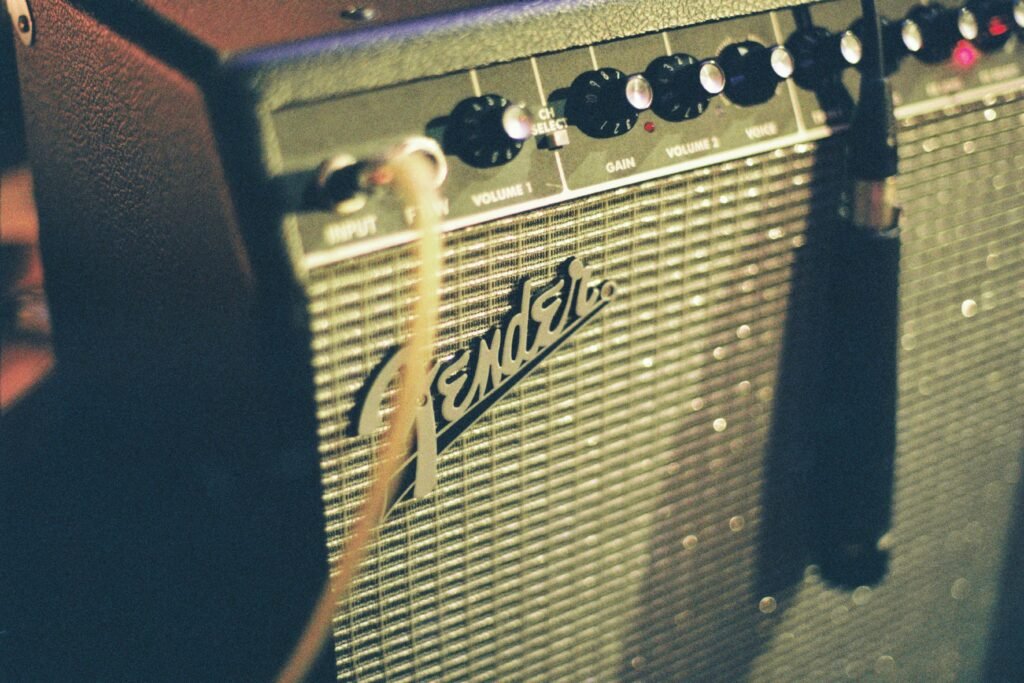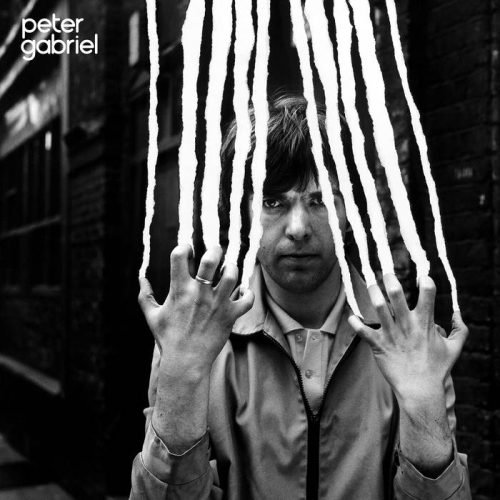Peter Gabriel’s second solo album, commonly referred to as “Scratch,” marks a pivotal moment in his career, characterized by bold experimentation and a decisive break from his previous work with Genesis. Released in 1978, “Scratch” follows his eponymous debut, often called “Car” due to its cover art. While “Car” laid the groundwork for Gabriel’s post-Genesis identity with a mix of rock and eclectic influences, “Scratch” delves deeper into the uncharted territories of sound and composition, showcasing his willingness to push musical boundaries.
In the broader music landscape of the late 1970s, “Scratch” emerges amidst a dynamic era where punk rock’s raw simplicity and the burgeoning new wave scene began to challenge traditional rock norms. Gabriel’s album, however, transcends these trends by embracing a more avant-garde approach, integrating elements of progressive rock, art rock, and world music. This was a period marked by rapid evolution in music production and genre blending, and Gabriel’s work is a testament to this transformative time.
Artistic Intentions
Gabriel’s artistic intentions with “Scratch” were to explore themes of identity, transformation, and societal critique, all while experimenting with unconventional sounds and production techniques. His collaboration with producer Robert Fripp, a guitarist known for his work with King Crimson, significantly influenced the album’s texture, adding a layer of intricate and often unsettling sonic landscapes. Gabriel aimed to create music that was not only innovative but also deeply reflective of his inner turmoils and societal observations. Interviews and album notes from the time reveal his desire to break free from the constraints of mainstream expectations, seeking instead to craft a unique and thought-provoking auditory experience.
Sonic Exploration

Production Quality
“Scratch” is renowned for its sophisticated production, a testament to the collaborative genius of Peter Gabriel and producer Robert Fripp. The album’s sound is meticulously crafted, balancing clarity with a sense of raw, unpolished intensity. The production is neither purely lo-fi nor excessively polished; instead, it strikes a compelling middle ground that amplifies the album’s eclectic nature. Fripp’s influence is palpable, infusing the record with a sense of spaciousness and experimental edge. The production quality supports the album’s themes of transformation and introspection, creating an immersive auditory experience that draws listeners into Gabriel’s complex, often unsettling world.
Musical Arrangements
The musical arrangements on “Scratch” are both intricate and innovative, reflecting Gabriel’s willingness to experiment with structure and texture. The album opens with “On the Air,” featuring a dynamic mix of driving rhythms and layered guitars that set a bold tone. Gabriel’s distinctive voice, alternating between melodic clarity and raw emotionality, is complemented by diverse instrumentation, including synthesizers, saxophones, and unconventional percussion.
Tracks like “Exposure” and “Mother of Violence” showcase sparse, haunting arrangements that heighten the emotional impact. “Exposure,” co-written with Fripp, exemplifies the album’s experimental spirit with its minimalist approach and eerie atmosphere. In contrast, “D.I.Y.” delivers a punchy, more straightforward rock sound, underpinned by catchy hooks and energetic rhythms. Throughout the album, the interplay between electronic elements and organic instruments creates a rich, textured soundscape that continually surprises and engages the listener.
Genre Elements
“Scratch” is a masterful blend of multiple genres, reflecting Gabriel’s refusal to be confined to a single musical style. The album incorporates elements of progressive rock, art rock, and proto-new wave, while also hinting at the world music influences that would later become more prominent in Gabriel’s work.
The track “White Shadow” exemplifies this genre-blending approach, combining a driving rock foundation with ambient, almost ethereal overtones. “Indigo” and “Flotsam and Jetsam” delve into art rock territory, with their abstract lyrics and unconventional structures. The album’s experimental nature is further highlighted in tracks like “Animal Magic,” which melds quirky, almost playful melodies with a darker lyrical undercurrent.
Lyrical Analysis

Themes and Messages
“Scratch” delves deeply into themes of identity, societal critique, and personal transformation, reflecting Peter Gabriel’s introspective and often critical view of the world. Central to the album is the exploration of self-awareness and autonomy, as evidenced in tracks like “D.I.Y.” Here, Gabriel champions the idea of self-reliance and individualism, pushing against the constraints of conformity and mass production. The recurring motif of disillusionment with societal norms is also evident in “Mother of Violence,” a stark commentary on the pervasive fear and control mechanisms in society.
Another significant theme is the fragility of human relationships and the psychological complexities of interpersonal connections. “Mother of Violence” also touches on this, portraying a chillingly intimate portrayal of anxiety and its impact on relationships. Meanwhile, “Flotsam and Jetsam” uses the metaphor of debris to reflect on the remnants of past connections and experiences that linger and shape one’s present self.
Lyrical Depth
Gabriel’s lyrics on “Scratch” are a blend of straightforward narratives and abstract, poetic expressions. This duality adds a layer of complexity to the album, inviting listeners to engage with the songs on multiple levels. For instance, “Exposure” features stark, repetitive phrases that evoke a sense of urgency and unease, while “Indigo” employs more vivid, almost surreal imagery to convey feelings of longing and introspection.
The lyrical construction throughout the album often veers towards the enigmatic, leaving much open to interpretation. This is particularly true in “White Shadow,” where the lyrics paint a series of dreamlike, ambiguous scenes that can be interpreted in various ways, adding to the song’s mystique and depth. This abstract approach allows Gabriel to address broad, universal themes while also making the listener ponder personal meanings.
Emotional Impact
The emotional resonance of “Scratch” is profound, largely driven by Gabriel’s evocative and thought-provoking lyrics. Each track conjures a distinct emotional landscape, from the defiant optimism of “D.I.Y.” to the haunting melancholy of “Mother of Violence.” Gabriel’s ability to convey complex emotions through his lyrical choices enhances the album’s overall impact.
“On the Air” and “Animal Magic” bring a sense of frenetic energy and urgency, urging the listener to confront the chaotic aspects of modern life. In contrast, songs like “Indigo” and “Flotsam and Jetsam” elicit introspection and contemplation, drawing the listener into a more reflective state. The emotional range covered in the album—from anxiety and fear to defiance and introspection—ensures a deeply engaging and multifaceted listening experience.
Cohesion and Flow

Track Progression
“Scratch” exhibits a thoughtful and deliberate track progression that enhances its narrative and emotional impact. The album opens with “On the Air,” an energetic and dynamic track that sets a bold tone and immediately draws the listener into Gabriel’s explorative world. This momentum is sustained through “D.I.Y.,” which continues the theme of self-empowerment with its punchy, anthemic quality.
As the album progresses, it begins to delve deeper into introspective and experimental territory. The transition from the upbeat “D.I.Y.” to the haunting “Mother of Violence” marks a significant shift in tone, showcasing Gabriel’s ability to navigate and juxtapose different emotional landscapes. This shift is further emphasized by “A Wonderful Day in a One-Way World,” which, despite its somewhat playful melody, carries a darker, more cynical undercurrent.
The middle section of the album, including tracks like “White Shadow” and “Indigo,” maintains a more subdued, reflective mood. These songs flow seamlessly into one another, creating a cohesive, immersive experience that encourages introspection. The album’s progression towards “Exposure” and “Flotsam and Jetsam” introduces a sense of fragmentation and disquiet, perfectly aligning with the themes of identity and societal critique.
The album closes with “Home Sweet Home,” a track that brings a sense of resolution and reflection. Its placement as the final track ties the album together, leaving the listener with a contemplative, lingering impression that resonates long after the music has stopped.
Thematic Consistency
“Scratch” maintains a high level of thematic and stylistic consistency throughout its runtime. The recurring themes of self-discovery, societal critique, and personal transformation are woven into each track, creating a unified narrative that is both compelling and thought-provoking. Gabriel’s lyrical content, characterized by its introspective and often abstract nature, reinforces this consistency, ensuring that the listener is constantly engaged with the album’s core messages.
The musical styles on “Scratch” are diverse yet cohesive, blending elements of progressive rock, art rock, and proto-new wave in a way that feels natural and integrated. While there are moments of stark contrast—such as the shift from the energetic “D.I.Y.” to the haunting “Mother of Violence”—these transitions are handled with finesse, avoiding any jarring disruptions to the album’s flow. Instead, these shifts serve to highlight the album’s dynamic range and Gabriel’s versatility as an artist.
Even the more experimental tracks, like “Exposure” and “Animal Magic,” fit seamlessly within the album’s overarching framework. These songs, with their unconventional structures and avant-garde influences, contribute to the album’s sense of exploration and innovation without detracting from its overall coherence.
Standout Tracks and Moments
Highlight Key Tracks
Several tracks on “Scratch” stand out for their artistic merit, innovation, and emotional impact, each contributing uniquely to the album’s overall narrative.
“D.I.Y.” – This track is a quintessential anthem of self-reliance and rebellion against conformity. Its punchy, infectious rhythm and catchy hooks make it an immediate standout. The song’s straightforward yet powerful message of individual empowerment sets it apart as one of the album’s most accessible and impactful tracks.
“Mother of Violence” – Haunting and minimalist, “Mother of Violence” is a stark contrast to the more upbeat tracks on the album. Its sparse arrangement highlights Gabriel’s emotive vocal performance and the poignant lyrics. This song stands out for its emotional depth and the way it encapsulates themes of fear and societal control in a deeply personal manner.
“White Shadow” – Combining a driving rock foundation with ambient, ethereal overtones, “White Shadow” is a standout for its intricate composition and the dreamy, almost surreal quality of its sound. The track’s expansive sonic landscape and enigmatic lyrics make it a highlight of the album, showcasing Gabriel’s skill in blending different musical elements to create something truly unique.
“Exposure” – This track exemplifies the album’s experimental spirit, featuring stark, repetitive phrases and an eerie atmosphere. Co-written with Robert Fripp, “Exposure” pushes the boundaries of conventional rock, making it a standout for its boldness and innovative approach.
Memorable Moments
The opening of “On the Air” – The album kicks off with a burst of energy, immediately drawing listeners in with its dynamic rhythm and engaging guitar riffs. This track sets the stage for the rest of the album, establishing a high level of intensity and creativity right from the start.
The lyrical delivery in “Mother of Violence” – Gabriel’s vocal performance on this track is particularly powerful, with his voice conveying a profound sense of vulnerability and despair. The haunting refrain, “Mother of violence,” lingers in the listener’s mind, capturing the essence of the album’s darker themes.
The instrumental break in “White Shadow” – About midway through the song, there’s a captivating instrumental section that blends electronic and organic sounds seamlessly. This moment showcases Gabriel’s and Fripp’s ability to create a rich, layered soundscape that is both innovative and emotionally resonant.
The climactic build in “Home Sweet Home” – As the closing track of the album, “Home Sweet Home” brings a sense of resolution with its gradual build-up to a powerful climax. The song’s reflective lyrics and uplifting melody provide a fitting conclusion, leaving a lasting impression on the listener.
The experimental soundscape of “Exposure” – This track’s use of minimalist, almost industrial sounds combined with Gabriel’s intense vocal delivery creates a unique and unsettling atmosphere. The repeated phrase “Exposure” reverberates, making this one of the most memorable and avant-garde moments on the album.
Artistic Contribution and Innovation

Place in Genre/Industry
“Scratch” occupies a significant and influential place within the progressive rock and art rock genres of the late 1970s. At a time when punk rock and new wave were gaining prominence, Peter Gabriel’s second solo album stood out for its sophisticated artistry and refusal to conform to mainstream trends. Gabriel, having recently departed from Genesis, was expected by many to continue in the same vein of progressive rock. Instead, he chose to forge a distinct path, blending elements of progressive rock with avant-garde experimentation and introspective lyricism.
Within the music industry, “Scratch” is regarded as a bold statement of artistic independence. It challenged the commercial norms of the time, emphasizing creative expression over mass appeal. The album’s willingness to delve into complex themes and unconventional sounds positioned Gabriel as a forward-thinking artist unafraid to take risks. This approach not only solidified his reputation as a solo artist but also influenced future generations of musicians seeking to push the boundaries of rock music.
Innovation
“Scratch” is notable for several innovative aspects that distinguish it from other albums of its era:
Production Techniques: The collaboration with Robert Fripp brought a unique sonic texture to the album. Fripp’s influence is evident in the intricate guitar work and atmospheric soundscapes that permeate the record. The production strikes a balance between clarity and rawness, creating a sound that is both polished and emotionally resonant. Techniques such as the use of tape loops and unconventional recording methods give the album a distinctive, experimental edge.
Genre Blending: Gabriel’s ability to blend different musical genres is one of the album’s most striking features. While rooted in progressive rock, “Scratch” incorporates elements of art rock, proto-new wave, and even hints of world music. This genre-blending is seamless and organic, creating a rich and varied auditory experience that defies easy categorization. Tracks like “White Shadow” and “Animal Magic” exemplify this innovative fusion, combining rock foundations with ambient and experimental sounds.
Lyrical Depth and Thematic Exploration: The album’s lyrical content is another area of innovation. Gabriel’s exploration of themes such as identity, societal critique, and personal transformation is both profound and multifaceted. His lyrics often veer into abstract territory, encouraging listeners to engage deeply with the music and derive their own interpretations. This abstract, poetic approach was relatively uncommon in mainstream rock at the time, marking a departure from more straightforward lyrical styles.
Emotional and Psychological Depth: “Scratch” delves into the psychological and emotional dimensions of its themes with a level of depth and intensity that was innovative for its time. Songs like “Mother of Violence” and “Indigo” not only convey complex emotional states but also invite listeners to reflect on their own experiences and societal contexts. This psychological and emotional complexity adds a layer of depth that enhances the album’s impact and longevity.
Closing Thoughts

“Scratch” by Peter Gabriel stands as a compelling testament to his willingness to push musical and thematic boundaries. The album’s strengths lie in its innovative production, thanks to Robert Fripp’s collaboration, and Gabriel’s ability to blend diverse genres into a cohesive and emotionally resonant whole. The intricate musical arrangements and profound lyrical content elevate the album, making it a rich and thought-provoking listening experience.
However, the album is not without its weaknesses. The experimental nature of “Scratch” can sometimes create a sense of disjointedness, with certain tracks feeling more like bold artistic statements than cohesive parts of a unified work. This can make the album challenging for listeners who prefer more straightforward or accessible music. Additionally, the abstract and often enigmatic lyrics, while intellectually stimulating, may alienate those seeking more direct or relatable messages.
Despite these drawbacks, “Scratch” is a significant work in Peter Gabriel’s discography, marking a period of intense creativity and exploration. It showcases his desire to break free from the commercial and stylistic constraints of his Genesis years, paving the way for his future solo endeavors. The album’s exploration of identity, societal issues, and personal transformation resonates deeply, offering a mirror to both Gabriel’s inner world and the broader human experience.
For listeners, “Scratch” presents an opportunity to engage with music that challenges and provokes thought, rewarding those who invest time in its complexities. It stands as a bold artistic statement, reflecting Gabriel’s commitment to authenticity and innovation.
Official Rating
We award the album a 6/10 rating. While “Scratch” is undoubtedly a groundbreaking and artistically rich album, it falls short of universal acclaim due to its sometimes inaccessible nature and uneven cohesiveness. Its experimental approach, while innovative, may not resonate with all listeners, leading to a more niche appeal. Nevertheless, its contribution to Peter Gabriel’s evolution as an artist and its influence on the progressive and art rock genres cannot be understated. This rating reflects the album’s artistic merit and innovation while acknowledging its potential to polarize its audience.
